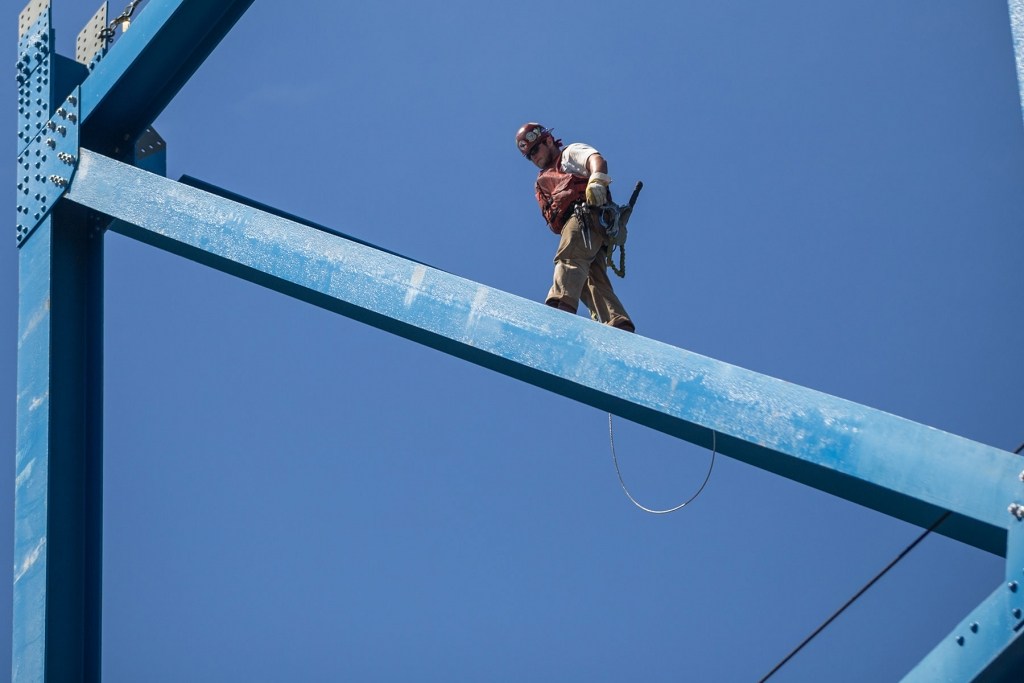
There’s momentum, but big hurdles remain.
It's May. Baseball season is in full swing, celebrities are serenading a new batch of college graduates, and everyone is sounding the alarm about the need to fix our nation's infrastructure.
Today marks the kickoff of Infrastructure Week 2017, the annual advocacy effort that sees labor leaders, business executives, government officials, and average Americans all come together to point out just what terrible shape our infrastructure is in. But unlike past years — when everybody publicly agreed there is a big problem and not-so-privately agreed there wasn't much of a chance anything would be done about it — this time around, people are a little more optimistic.
That's because infrastructure is one of the (very) few areas left for bipartisanship in Washington. Republican President Donald Trump has called for a $1 trillion infrastructure plan — and Congressional Democrats are all for it, having introduced a $1 trillion infrastructure plan of their own back in January.
At the official Infrastructure Week kickoff event on Monday morning, Transporation Secretary Elaine Chao said the Trump administration is preparing to release its "vision" for infrastructure in the next several weeks.
For the first time in a long time, there's real momentum on infrastructure.

Now, the bad news.
Trump's plan isn't even out yet, but when it is it will "face numerous hurdles" making its way through Congress — which will likely include major opposition from the president's own party. Meanwhile, the fallout over Trump's decision to fire FBI Director James Comey has halted the president's legislative agenda, at least for the time being.
So, long road ahead. But there's absolutely no doubt that the need for major infrastructure investment has only grown.
The American Society of Civil Engineers released an updated report card on the nation's infrastructure earlier this year, and the results weren't good. Overall, America's infrastructure earned a D+ grade, with many individual categories earning grades below that (Aviation, Dams, Roads, Drinking Water systems, Inland Waterways and Levees all earned Ds, while transit recorded a D- grade).
Nearly everybody is in agreement something has to be done — pointing out that not only is our almost-failing infrastructure a major public safety hazard, it's also making us less competitive on the global stage.
In 2014, the Duke University Center on Globalization, Governance & Competitiveness found that while the United States boasts the world's largest stock of transportation infrastructure, it ranks 16th in the world in terms of quality of infrastructure. Meanwhile, underinvestment costs the United States more than 900,000 jobs — including 97,000 in manufacturing.
A robust, long-term infrastructure spending package would not only make us more competitive, but it would be a big job creator. Duke researchers estimated that a spending plan worth $114 billion annually would create 2.5 million new jobs; every $1 billion invested in infrastructure would create 21,000 new jobs.
Buy America must be a key part of any infrastructure investment package, of course, ensuring that any infrastructure projects built with taxpayer dollars are Made in America. Why send tax dollars overseas when there are American workers and manufacturers ready and able to do the job here, at a fair price?
You can help spread the word about the need for infrastructure investment. Ask your Members of Congress to back infrastructure investment with Buy America preferences. Take part in an Infrastructure Week event, either in D.C. or a city near you. And be sure to join the conversation on social media, using the hashtag #TimetoBuild.
